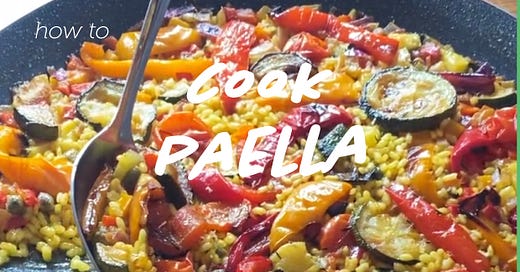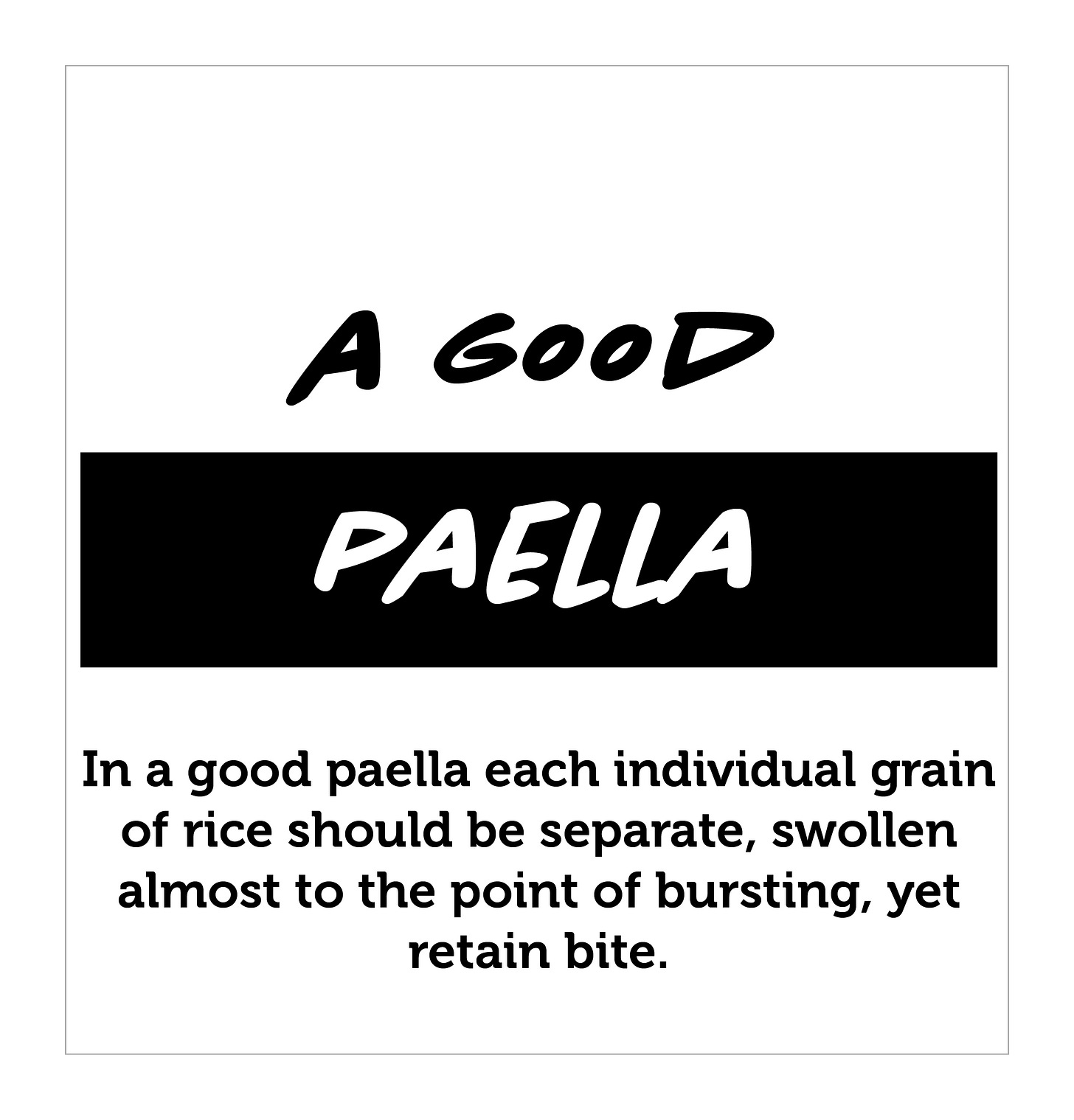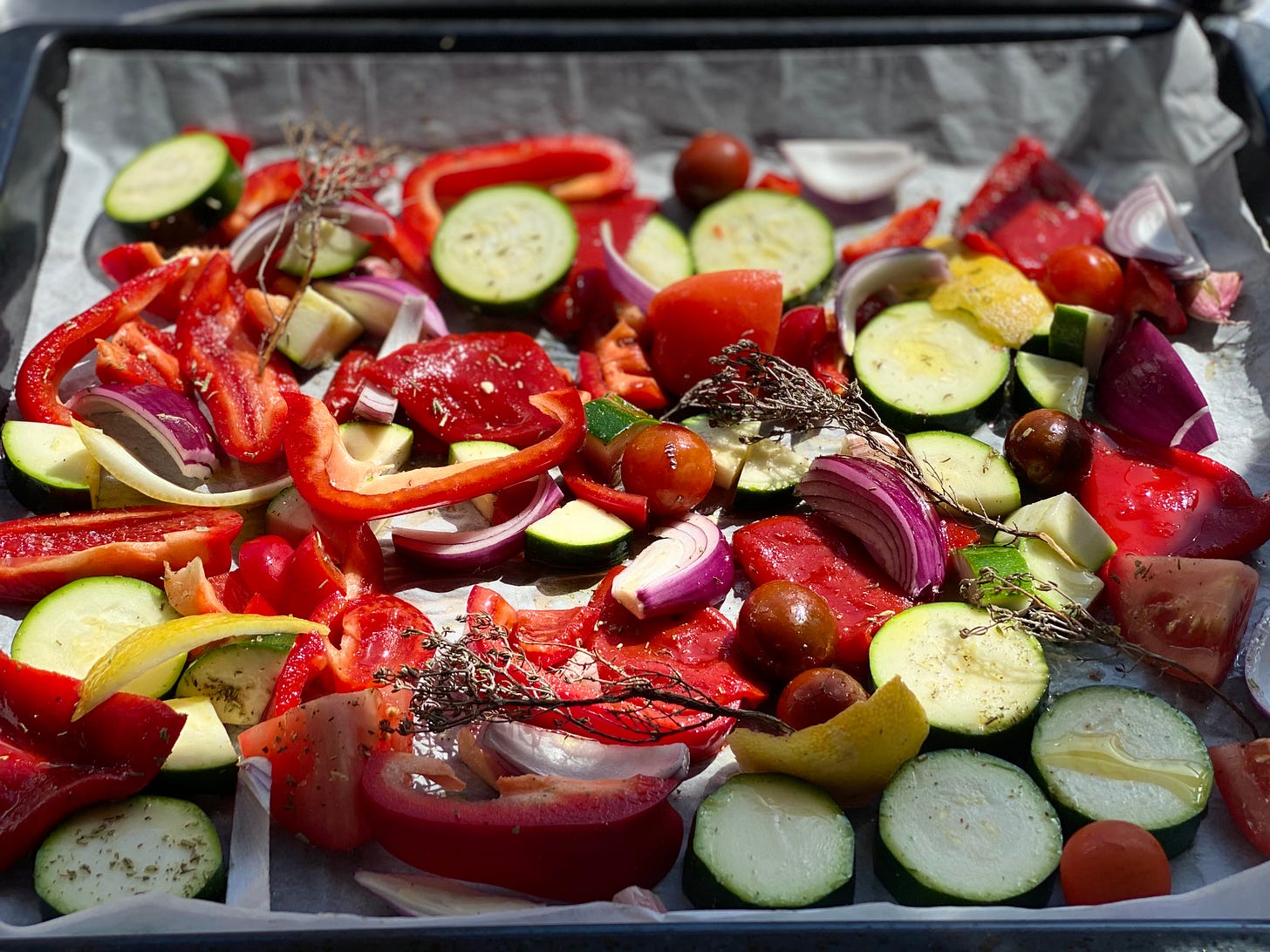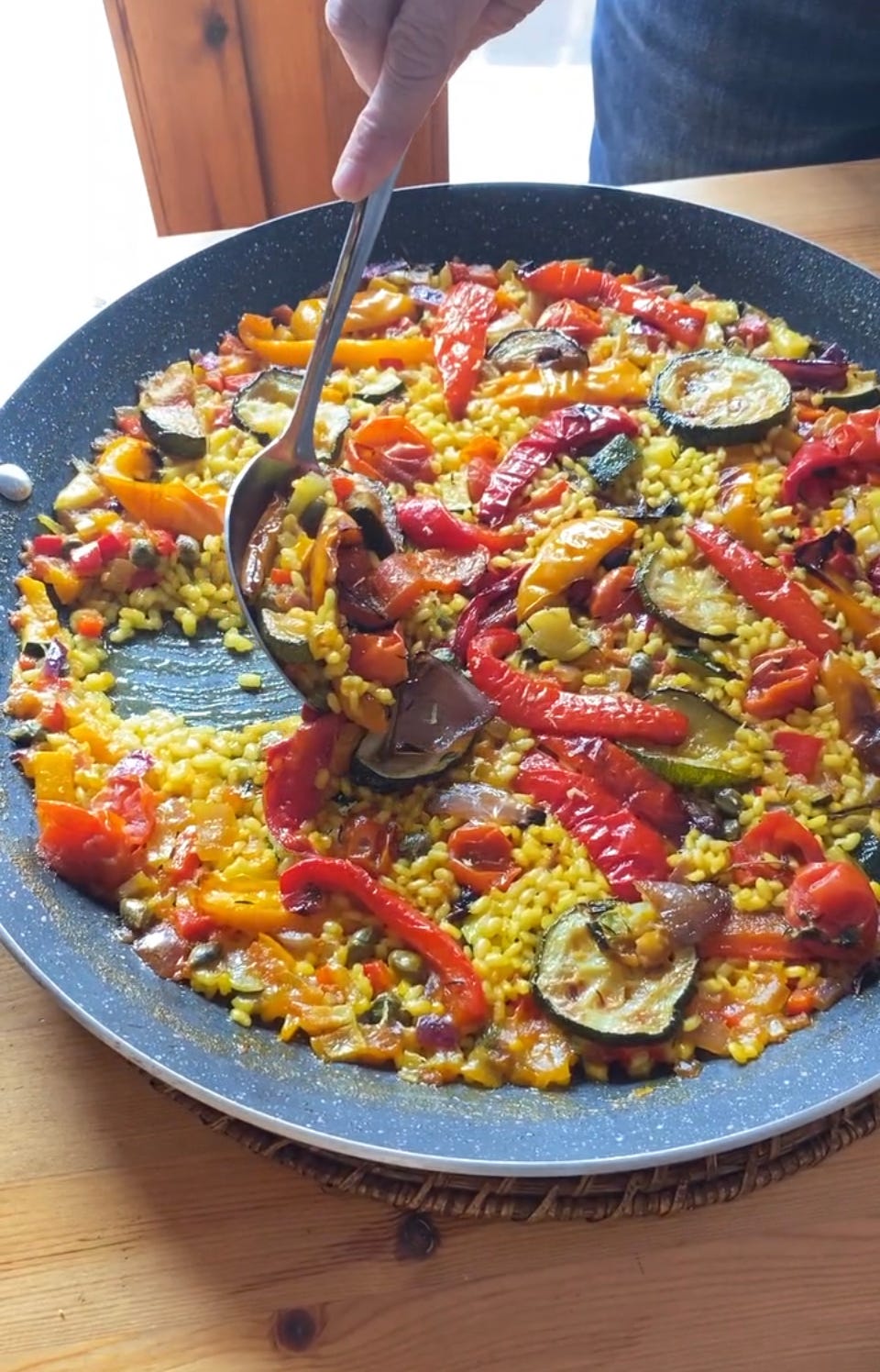You are reading Olympian Kitchen, by Nicola Fairbrother - a newsletter for those who like cooking (and eating!) See more.
A PAELLA NEVER fails to put a smile on people’s faces. Washed down with laughter and perhaps a Sangria, they never last long: each saffrony-yellowy caramelised grain scraped from the pan with gusto.
But what you will really be laughing about is a) how easy it’s all come together and b) that there’s just one pan to wash up. Maybe this is why the Spanish are so cheerful?
I learnt the 17-minute ‘stock first, rice second’ method of cooking paellas when I was working at El Monastrell, a restaurant in Alicante, famous for its gourmet arroces.
Once you’ve got prep done, it’s an easy 17 minutes of watching the bubbles bubble and the rice crackle, and olé, mis amigos - it’s done!
Give me a sec, and I’ll show you how to make a tasty Roasted Mediterranean Vegetable Paella (Arroz) using this simple method.
But first something you absolutely must get right: and that’s the rice.
BECOMING A BETTER COOK
By understanding the how’s and why’s we gain more confidence in the kitchen.
Use Paella Rice. Varieties like Bomba, Bombita, Sendra, Calasperra, Albufera are all excellent choices. Outside of Spain these varieties are often packaged up simply as “Paella rice.” Perfecto! This is what you need.
Why? Because paella rice will make it much easier to achieve the desired result. In a good paella all the individual grains should be separate, not clumped together. They should have bite and be full of flavour.
Paella rice allows this to happen. With just enough amylose (hard starch), the grains don’t easily break up and leech starch into the water, like a risotto rice does, or become sticky, like a sushi rice will.
With paella rice, each grain stays intact when cooked and yet is also capable of absorbing three times its weight in liquid - and so flavour!
HOW DO THE RESTAURANTS COOK PAELLA IN SPAIN?
There are many methods of cooking paella and arroces used in Spain, but at the restaurant I worked in (who I should mention were runners-up at the annual World Paella Championships) the method used was: ‘Stock first, rice second’
At home, I’ve found this method to be a sure-way the rice doesn’t over cook.
For restaurants, its a great way to control lots of simultaneous orders.
This is how a paella is prepared in a kitchen. First the order comes in and the dish is half-prepared. This means getting each paella pan filled with the right quantity and type of stock, sofrito, salmoretta, salt and saffron - and cooking any proteins.
Once half ready - the pan would then be pushed to the back of the burner until required. During a busy service, these paella pans would begin to stack up Jenga style.
Then as the order is fired (ie the head chef tells you to cook so and so paella), we would extract the correct paella pan from the jenga tower and heat it up.
At the first bubbles of a boil, we’d tip the rice in, and set a timer.
It’s a method that allows you to have the paella on the table in 17 minutes.
That’s the time the rice needs to cook.
If you’d like to give the method a whirl. Start off with this simple Roasted Mediterranean Vegetable Paella (Arroz) - you can of course add in proteins if you want (just make sure you cook them first!)
Roasted Mediterranean Vegetable Paella (Arroz)
For 4 people, in a 40cm paella pan.
320g paella rice
1 litre chicken stock
1 packet ground saffron
3 tbs sofrito
1 red pepper
1 yellow pepper
1 courgette
handful of cherry tomatoes
good quality olive oil
A homemade stock will give more depth of flavour. As will a homemade sofrito (and I’ll be covering how to make sofrito on Olympian Kitchen soon), but if time is short, or you don’t know how buy a jar like this one from Brindisa.
On your marks! (or, if you’re a kitchen, mise)
Step 1: Get everything ready
Pre-heat the oven 190°C/ 375°F.
Steep the ground saffron in a little warm water (start this at least 30 minutes before you begin cooking the paella).
Take three-quarters of the veg. Chop into chunks or slice into slices, drizzle with olive oil, sprinkle with herbs, and put in an hot oven for around 45-60min until beautifully caramelised.
Dice the rest of the veg.
Measure your rice.
Measure your stock.
Keep in Mind
You can hold the roasted veg in a low oven, or if you have got to this stage well before time.
Get Set! (order comes in)
Step 2: Paella pan to the ready
Add the sofrito, stock and saffron to the paella pan and bring to just to the boil, then switch off the heat and take off heat.
Taste and season for salt. This is your chance to get the seasoning right (you won’t be able to add salt later on) - don’t forget it now!
Keep in Mind
Ideally you want to get to this stage about 30 minutes before your guests arrive. Then you can chill out, take a shower, have a drink…
Go! (order is fired)
Step 3: Cook the Paella
Turn on the heat under the pan.
Add the raw diced veg to the stock.
Bring to a boil.
When the liquid boils add the rice. Sprinkle it, evenly over. One gentle swirl with metal spoon and then don’t touch it again. Don’t stir (you’ll create a risotto if you do)
Immediately set the timer: 17 minutes.
After about 5 minutes, the rice will begin to surface. When it does add the pre-roasted vegetables, they should stay near the surface and will make the paella look pretty.
For the final 2 minutes, turn the heat back up to create the crispy socarrat layer.
Rest for 5 minutes (uncovered) and then serve.
THINGS TO WATCH OUT FOR
I love watching a paella cook, so I thought I’d add a few notes of what to watch out for and you might love watching yours cook too.
After about 5 minutes, the rice swells
A few minutes in, and you’ll see the rice begin to rise to surface, as it absorbs the stock and swells. It’s a good sign. Gelatinazation has begun, the starch beginning to break down and turn into a soft gel.
Watch the stock disappear
Over the next 10 minutes, you’ll see the stock disappear, as it is absorbed or evaporates. If the rice goes dry too quickly, you can add more stock - but if you do make sure it is hot.
About 3 minutes from the end
Almost all the stock has gone now. You will see large volcanic bubbles as the last of the stock disappears, then nothing.
About 2 minutes from the end and the rice begins to sing
Near the end of the cooking time, with the liquid gone, the rice will start to caramelise in the sugars and the oils. You will hear a crackle. The Spanish say the rice sings! Turn the heat up to create the crunchy socarrat layer, but keep your nose open, and be alert for the base burning.
1 minute from the end and you begin to sing
Begin smiling - as laughter and sangria is on its way. Your job here is done.
Paella*
All paellas are rices, but not all rices are paellas.
And now for a quick disclaimer to la paz with my Spanish friends. This is not officially a paella. Anything other than the Valencian Paella (made with a very specific list of ten ingredients) is known in Spain as “un arroz.” In Spain, calling un arroz a paella is rather like calling an English sparkling wine a champagne, and a cracking way to spark a lively debate if you have a group of Valencianos or Alicantinos at your table. Technically, this article should be titled “Rice in 17 minutes”, but let’s be honest who would have read that?
👨🍳 THAT’S IT FOR NOW! THANKS FOR THE KIND COMMENTS ABOUT THE CHEF STAGE. I’M PLAN TO GET THIS GOING AGAIN. THERE’S BEEN A LOT OF NEW SUBSCRIBERS TO OK LATELY, SO I’LL BE DOING A QUICK RECAP OF THE PREVIOUS EPISODES - WITH THE FIRST ONE GOING OUT TOMORROW.
NIK X











Tus arroces me gustan mucho 😋
😁😁😁😁😁😁😁😁😁